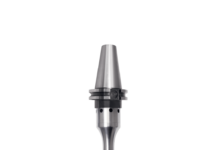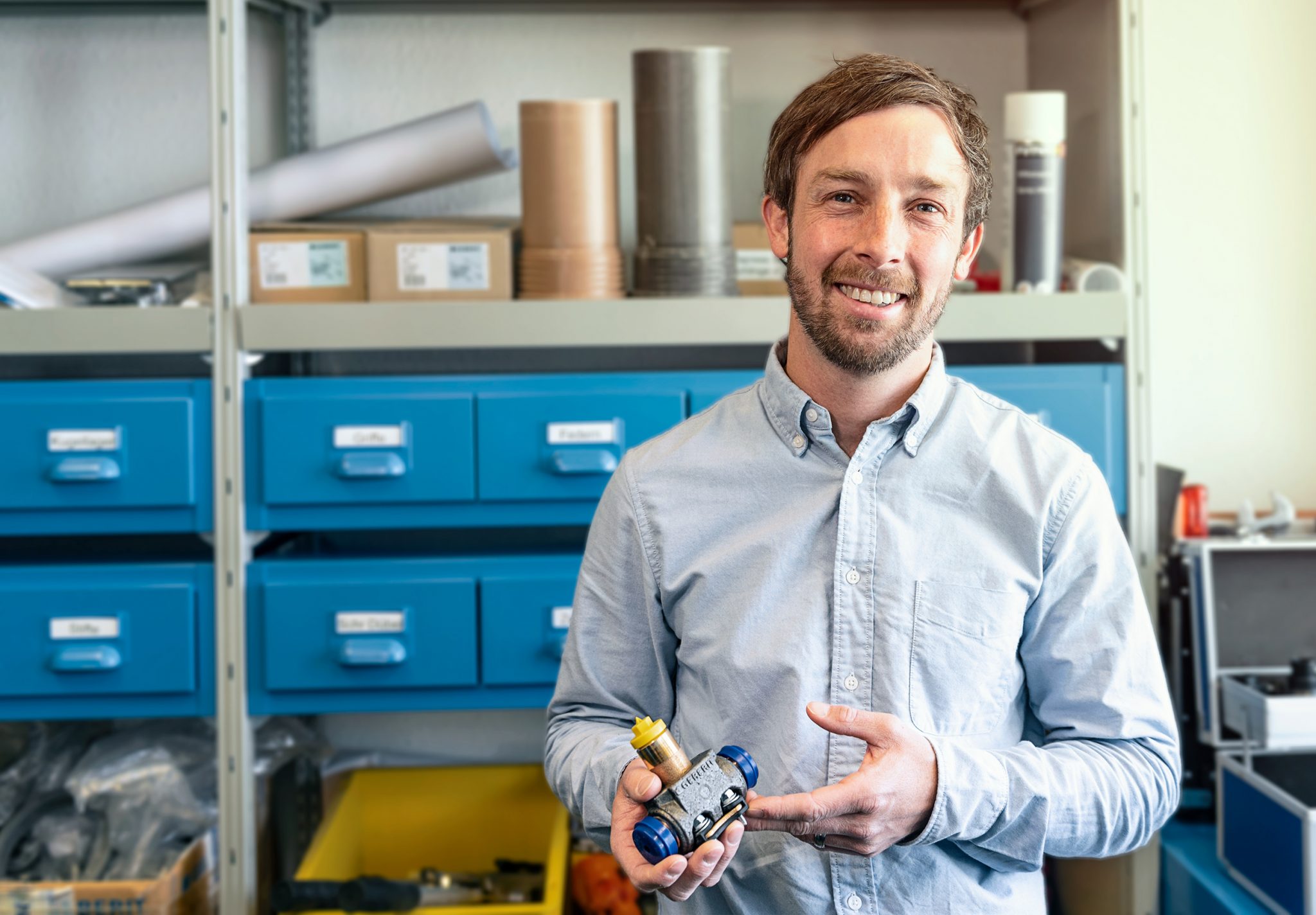
In order to minimize the development time for new products, Geberit International AG manufactures many prototypes using 3D printing. Since 2016, the Swiss company uses a Sintratec S1 for design optimization and material testing in its prototyping laboratory.
The Geberit Group, the market leader for sanitary parts in Europe, operates 29 production plants in over 50 countries. Before the Group releases a new product for market launch, it must meet a variety of requirements. At the Group headquarters in Rapperswil-Jona, Switzerland, all prototypes are tested for quality, functionality, design and ease of assembly. Development engineers from various departments benefit from the modern prototyping laboratory. It allows them to implement their ideas within a short time.
Before mass production (e.g. injection moulding), each component undergoes several design variants. A considerable number of professional devices are available in Geberit’s prototyping laboratory with a wide range of 3D printing processes. A total of around 16,000 parts are printed each year – by SLS, FDM, SLA, 3DP or MJF.

Special solutions for confined spaces
One recent product concept was a flexible sheathing of a valve connection angle for installation in confined spaces. Roger Baggenstos, Geberit development engineer in the Piping Systems division, develops special solutions such as this: “Supply systems are insulated so that as little heat as possible is radiated from the hot water pipe to the cold water pipe – in that way, the hot water remains warm and the cold water cold. This is also necessary to comply with the normative requirements. For the valve connection angle as an example, we use expanded polypropylene, EPP for short.” The foamed plastic is stretchable and mechanically strong at the same time.
Such hygiene requirements generally affect the design of the water supply lines. Today, these are designed to keep the pipe distance with stagnant water as low as possible. In the past, for example, one separate pipe each led to the washbasin, one to the toilet and one to the shower, while today the line is continued directly from one installation to another.
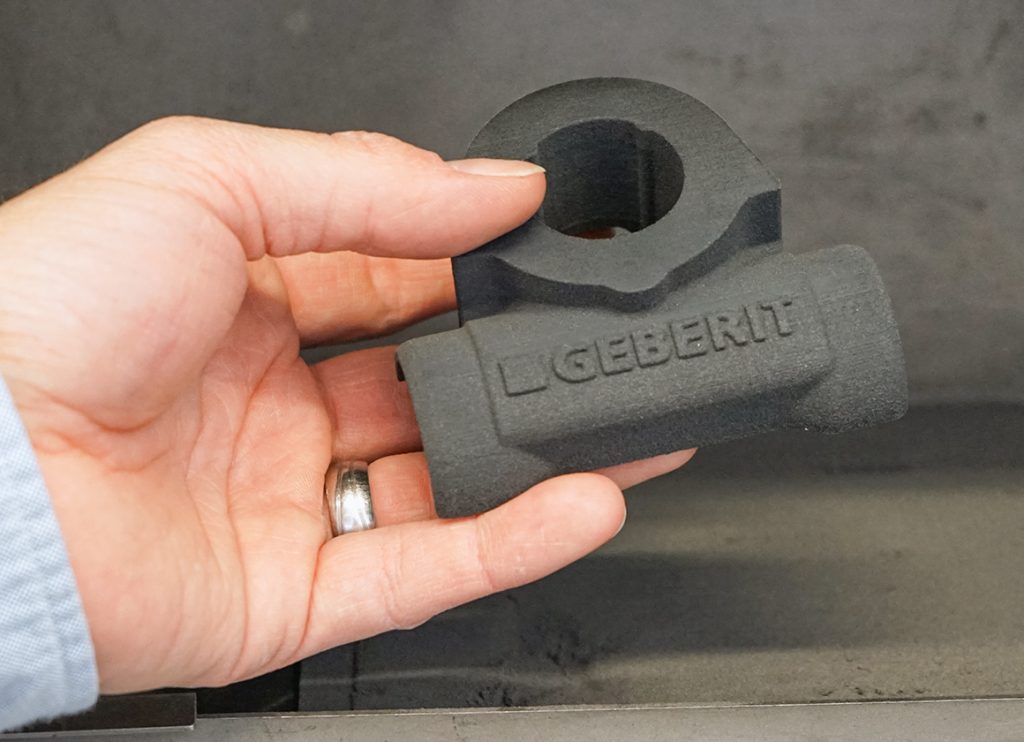
Instantly available functional prototypes
Back to the EPP sheathing: Geberit uses selective laser sintering (SLS) to produce functional prototypes with largely similar properties to such a sophisticated component. The coating was printed with the flexible Sintratec TPE material on the Sintratec S1 SLS desktop printer and immediately tested in a real construction situation. Thus, Roger Baggenstos and his team were able to check whether the product idea really was mountable. With success: The two sheathing parts could be moved around the fitting connection angle without any obstacle and fixed onto it by means of the required snap mechanism.
Hugo Arnold, head of the prototyping laboratory at Geberit, looks back on the project: “Prototypes produced with other 3D printing processes did not show the required flexibility and mechanical strength. The decision to manufacture the components on the Sintratec S1, however, depended on other factors.” Interestingly, the large SLS systems proved to be impractical for the project due to their complex material change processes: “On the Sintratec S1, which has a small printing area, I can immediately carry out a test print with relatively little powder,” continues Hugo Arnold. So, printing small individual parts on large-scale SLS systems is impractical.
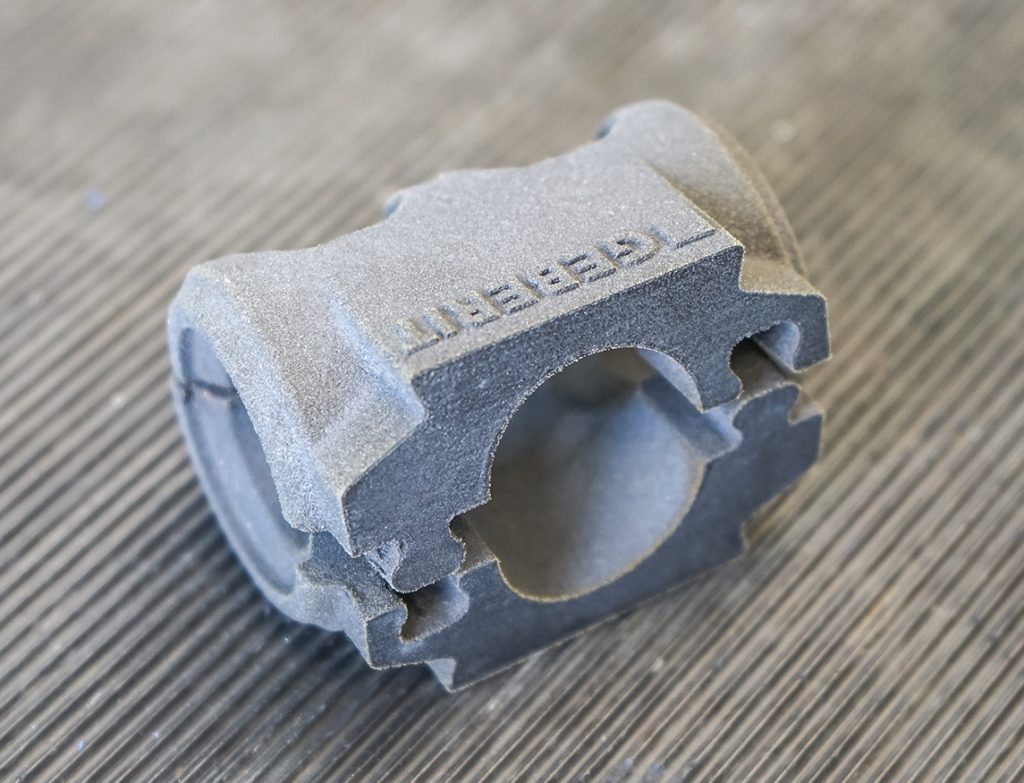
3D printing has largely replaced conventional methods
That SLS systems like the Sintratec S1 create competitive advantages is also confirmed by Roger Baggenstos, who had only little development time available for this project: “We appreciate the fast implementation possibilities of test components. With the printed prototype in hand, we can immediately evaluate its function together with our production partner.”
With the durable Sintratec PA12, Geberit prints objects such as water housings, distributors or test specimens that can withstand water pressure up to 48 bar. Geberit uses the flexible Sintratec TPE material for seals on illustrative models, sound insulation parts (for the decoupling of water noise) or thermal insulation parts. In order to satisfy the developmental curiosity of engineers and laboratory personnel, tests with foreign materials are also carried out with the Sintratec S1 Hugo Arnold comments: ”For such research applications, we evaluate ten to twenty parameters per day.”
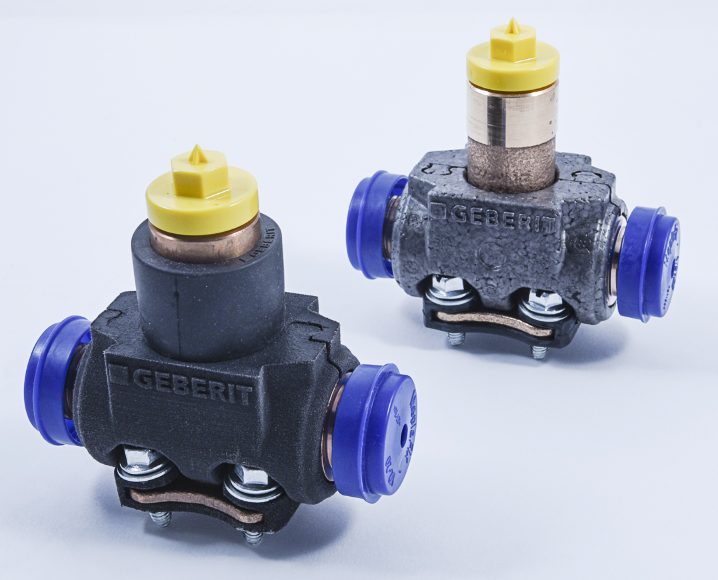
Extended imagination, shorter time-to-market
Geberit had already purchased the first 3D printer in 2005. While lathes and milling machines still made up the majority in the prototyping laboratory at that time, 3D printers dominate today. Selective laser sintering is one of the most commonly used technologies. Roger Baggenstos summarizes: “Thanks to SLS, we benefit from an easier idea generation in product development. The feel of 3D-printed objects sparks our imagination and enables us to quickly optimize designs and thus significantly reduces time-to-market.”
About Sintratec
Sintratec is the leading Swiss provider of first-class selective laser sintering (SLS) solutions. The professional 3D printing systems and resilient materials meet the highest industrial requirements. From the consultation to the service – Sintratec offers a user-friendly and overall package for modern, scalable additive manufacturing. To realize your ideas and designs in a fast and cost-effective way.
Sintratec AG
Badenerstrasse 13
5200 Brugg
Switzerland
P: +41 56 552 00 22
Contacts for Journalists and Bloggers
Luca Meister | Media Relations
Gabor Koppanyi | Head of Marketing and Sales

